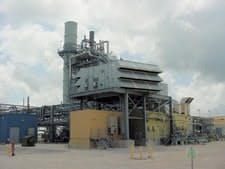Call it what you will, it's still artificial intelligence
Oct. 27, 2004
8 min read
They’re not really using Artificial Intelligence (AI) over at the St. Mary’s Paper plant in Sault Ste. Marie, Ontario Moore
Many techniques that came from the esoteric world of AI are now proving themselves on the plant floor. Besides neural networks, processors and manufacturers are installing software agents and expert systems. They are often retrofitting existing equipment with new software. But they don’t call it AI.Instead they just call it improved process control. That’s the way Charles Cutler, president of Cutler Technology Inc. San Antonio, Texas describes what he’s offering.Cutler, a CONTROL Process Automation Hall of Famer, first retired in 1996 after selling DMC Corp. and its Dynamic Matrix Control technology to AspenTech. "After I retired, I started thinking [about] this problem," he says, and began thinking of ways to improve the DMC algorithm.According to Cutler it was a revelation. "You put constraints on the system, via a linear program, and it keeps the machine inside those boundaries. When it comes up against a boundary, it makes a decision based on software, rather than [on some] arbitrar[y factor]," he says. Engineers were turning his linear controller into an expert system.Most major process control vendors are working on some form of expert system or neural network to enhance productivity. These companies are not just getting more production out of each worker, they’re improving quality, extending equipment lives and using all inputs more efficiently.ARTIFICIAL INTELLIGENCE INSIDE
Many techniques that came from the esoteric world of AI are now proving themselves on the plant floor. Besides neural networks, processors and manufacturers are installing software agents and expert systems. They are often retrofitting existing equipment with new software. But they don’t call it AI.Instead they just call it improved process control. That’s the way Charles Cutler, president of Cutler Technology Inc. San Antonio, Texas describes what he’s offering.Cutler, a CONTROL Process Automation Hall of Famer, first retired in 1996 after selling DMC Corp. and its Dynamic Matrix Control technology to AspenTech. "After I retired, I started thinking [about] this problem," he says, and began thinking of ways to improve the DMC algorithm.According to Cutler it was a revelation. "You put constraints on the system, via a linear program, and it keeps the machine inside those boundaries. When it comes up against a boundary, it makes a decision based on software, rather than [on some] arbitrar[y factor]," he says. Engineers were turning his linear controller into an expert system.Most major process control vendors are working on some form of expert system or neural network to enhance productivity. These companies are not just getting more production out of each worker, they’re improving quality, extending equipment lives and using all inputs more efficiently.
Over at IMC Agrico in Mulberry,
About the Author
Dana Blankenhorn
Dana Blankenhorn
Sign up for our eNewsletters
Get the latest news and updates

Leaders relevant to this article:

